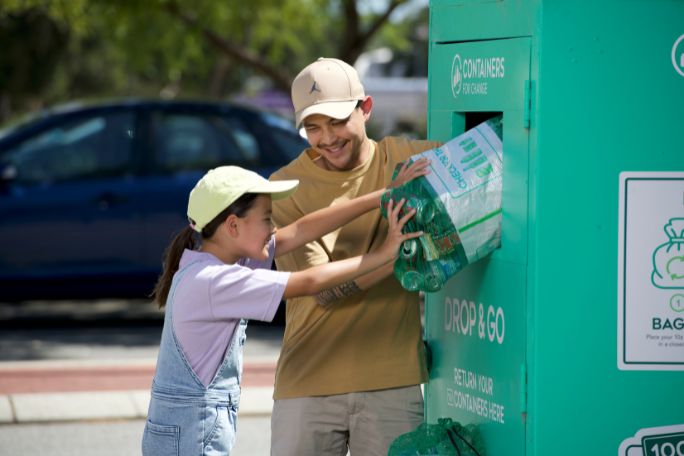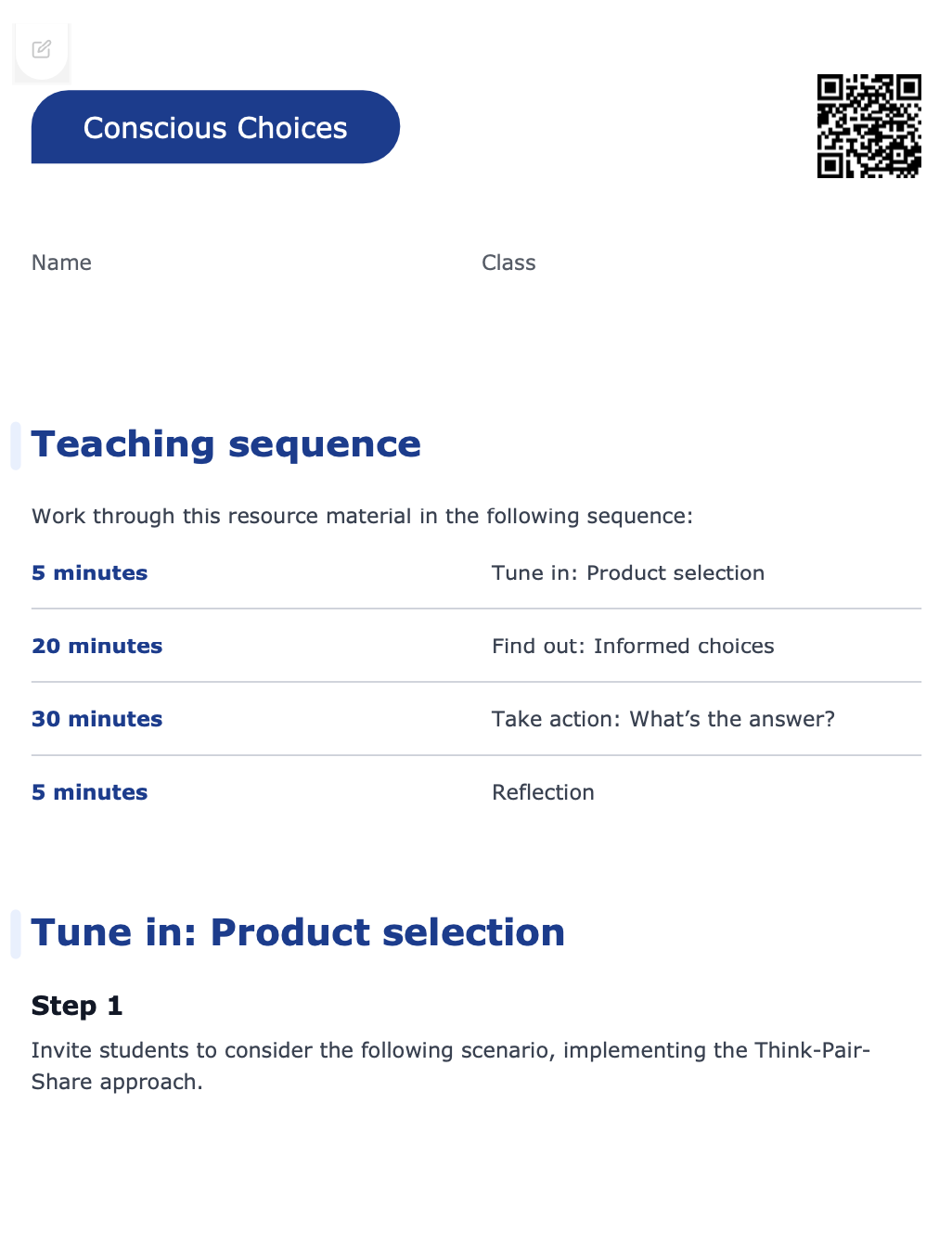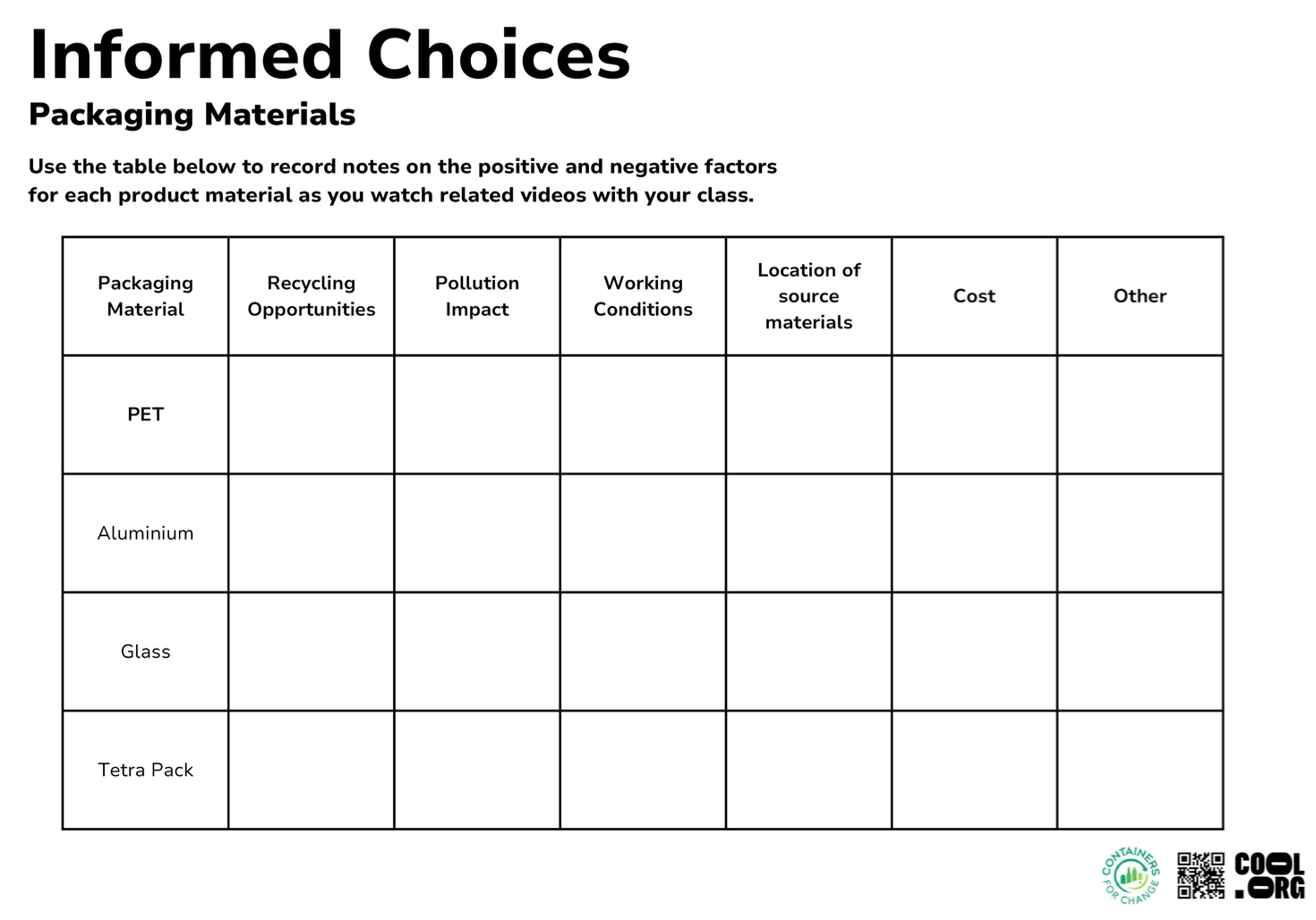Lesson summary
When consumers make a purchase they consider a broad range of factors. By researching and building their understanding of the recycling processes for beverage containers students will be able to make more informed purchasing decisions as well as building their understanding of the decision making process.
Learning intentions:
Students will...
- develop their understanding of a range of factors they can consider when selecting consumable products.
Success criteria:
Students can...
- identify pros and cons of beverage containers made from aluminum, glass, PET and tetra packs
- recognise a range of different factors they can consider when determining the impact of particular container types
- validate their own decisions regarding what material they will choose to consume.
Lesson guides and printables
Curriculum links
Select your curriculum from the options below.
Lesson details
Skills
This lesson is designed to build students’ competencies in the following skills:
- critical thinking
- curiosity
- digital literacy
- ethical understanding
- reflection
Curriculum Mapping
Western Australian Curriculum - Year 6, HASS
- The impact consumer purchasing decisions can have on a family, the broader community (e.g. purchasing from the local growers' market or a supermarket chain) and the environment (e.g. pollution, waste) (ACHASSK150)
Australian Curriculum (v9.0) content descriptions - HASS
- Students learn about influences on consumer choices and strategies that can be used to help make informed personal consumer and financial choices (AC9HS6K08)
General capabilities: Critical and Creative Thinking, Ethical Understanding
Cross-curriculum priority: Sustainability
Relevant parts of Year 6 achievement standards: By the end of Year 6, students explain influences on consumers and strategies for informed consumer and financial choices. Students develop questions, and locate, collect and organise information and data from a range of primary and secondary sources. They evaluate sources to determine origin, purpose and perspectives. Students evaluate a range of information and data formats to identify and describe patterns, trends or inferred relationships. They evaluate evidence to draw conclusions. Students propose actions or responses and use criteria to assess the possible effects. Students select and organise ideas and findings from sources, and use a range of relevant terms and conventions, to present descriptions and explanations.
Western Australian Curriculum - Year 6, HASS
- The impact consumer purchasing decisions can have on a family, the broader community (e.g. purchasing from the local growers' market or a supermarket chain) and the environment (e.g. pollution, waste) (ACHASSK150)
UN Sustainable Development Goals
UN SDG 12: Ensure sustainable consumption and production patterns
- Target 12.1: Implement the 10-Year Framework of Programmes on Sustainable Consumption and Production Patterns, all countries taking action, with developed countries taking the lead, taking into account the development and capabilities of developing countries
Resources Required
- Device capable of displaying digital resources for students
- Digital device (one per student) to access resources
- Student worksheet (one per student)
Additional Info
Level of teacher scaffolding: Medium - some students may require support to interpret information, discern what is relevant and draw conclusions.




Welcome back!
Don't have an account yet?
Log in with:
Create your free Cool.org account.
Many of our resources are free, with an option to upgrade to Cool+ for premium content.
Already have an account?
Sign up with:
By signing up you accept Cool.org's Terms and Conditions(Opens in new tab) and Privacy Policy(Opens in new tab).